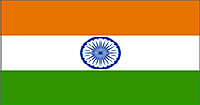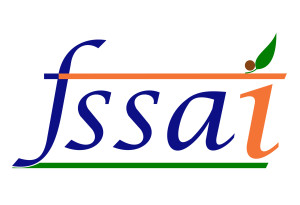Northwest Horticultural Council
Export Manual
INDIA
 Capital: New Delhi
Capital: New Delhi
Population: 1,409,128,296 (2024)
Currency: Rupee
Official Language(s): Hindi
I. CHEMICAL MAXIMUM RESIDUE LEVELS (MRLs)
Please click on the above link for a list of chemical MRLs.
II. CHEMICALS AND ADDITIVE INFORMATION
A. Chemical residue standards:
Maximum tolerance levels for approved chemicals are included on India’s positive list. India sets a default tolerance of 0.01 parts per million (ppm) for commodity/pesticide combinations for which a specific tolerance has not been established.
B. Monitoring chemical residues:
India monitors chemical residue levels on imported food products through the sampling of 100% of the consignments at the port of entry.
C. Restrictions on use of waxes:
India permits the use of white and yellow beeswax, shellac, and carnauba wax.
Every package of fresh fruits, if coated with wax shall carry the following label, namely:
“Coated with wax (give name of wax).”
India tests for the presence of “added wax coating” through the 100% sampling of consignments at the port of entry.
III. ORGANIC FRUIT REGULATIONS
Food Business Operators in India are required to follow the Food Safety and Standards (Organic Foods) Regulations 2017, which mandates the use of a Food Safety Standards Authority of India (FSSAI) organic logo on the primary label of all certified organic products entering India. The FSSAI Page organic logo will be required, in addition to the FSSAI logo.
IV. TARIFFS
Apples 50%
Pears 30%
Cherries 30%
As of September 6, 2023, India has removed the additional 20 percent tariff on U.S. apples implemented in retaliation for the United States’ Section 232 tariffs imposed on India’s steel and aluminum.
India selectively applies a “Social Welfare Surcharge” (SWS) of 10% of the basic customs duty on imported goods. However, the SWS for pears and cherries is three percent.
Apples are exempt from the Social Welfare Surcharge as the tariff charged on this product is equal to the WTO bound rate for India.
India imposes a 4.5% service tax on all ocean cargo that is transported on ships registered in other countries. The tax is imposed on imports at the point of origin, based on the value of the goods at the point of origin.
V. NON-TARIFF BARRIERS
A. Labeling requirements:
The shipping carton label must specify the following:
-
- The nature (name) of the commodity (e.g., apple)
- Name and complete address of the importer
- Name and complete address of the packer
- Lot identification
- Pack date (day/month/year in the format of DD/MM/YYYY)
- Country of Origin
- Wax statement: India requires that every package of fresh fruits, if coated with wax, shall carry the following label, namely: “Coated with wax (give name of wax)”
-
- The net weight may be mentioned on the package
The above information must be printed (preprinted or ink jetted) or rubber stamped on the carton prior to export. However, only one application method (printing or stamping) may be used.
The following additional information must be on the carton prior to the shipment clearing customs.
-
- Vegetarian Logo: Every package of vegetarian food must have a symbol consisting of a green color-filled circle inside a square with a green outline prominently displayed on the package, contrasting against the background on the principal display panel. There are no specific shade requirements for the green color. The symbol should be in close proximity to name or brand name of the food.
The symbol has to be printed in COLOR.

Image: Vegetarian Logo
Size: For a carton of apples (end panel), the minimum diameter of the green color filled circle should be 6 mm (Approx. 0.25 inches) and the square box should be minimum 12mm (0.5 inches).
The importer may apply the vegetarian logo by placing a sticker with the logo on each carton prior to clearing customs.
-
- FSSAI logo, importer FSSAI license number, and importer name and address: The Food Safety Standards Authority of India (FSSAI) requires that:
“the importer shall display FSSAI logo and license number along with the name and address of importer. These may either be pre-printed on the label or affixed through a sticker before customs clearance.”
The FSSAI logo must be printed in contrasting color to the background the logo is printed on. For example, black ink for the FSSAI logo is acceptable if it is printed on a white sticker.
Importer FSSAI License Number: XXXXXXXX
In May 2018, FSSAI expanded the number of labeling requirements that can be rectified at custom-bonded warehouses in India by affixing non-detachable stickers next to the principal display panel. The list of “rectifiable labeling deficiencies” for cartons of fruit includes the following:
-
-
- name and complete address of the importer
- name and complete address of the packer
- lot identification
- date of packing
- vegetarian/non-vegetarian logo
- FSSAI logo and license number
- Declaration of food additives
-
If a sticker is applied to a shipping carton to rectify a labeling deficiency, it must not cover up any other labeling requirements.
Additional Notes
-
- Technical Information: A statement indicating the use or possible use of 1-MCP or other postharvest pesticides is not required. When such a statement is found on the carton by Indian officials it has caused delay in clearing the shipment and may lead to rejection of the shipment at port of entry.
- Best Before Date: The Food Safety Standards Authority of India (FSSAI) does not require a “Best Before Date” statement to be printed on the label of fresh fruit cartons.
B. Licenses and quotas:
None.
C. Currency Issues:
None.
D. Pest and plant disease restrictions:
India has eliminated the requirement that importers obtain an Import Permit (IP) for apples, pears, and cherries in order to clear these fruits into the country.
There has not been any change in the specific pest and disease requirements related to importing apples, pears, and cherries. And, the specific requirements for each fruit must appear on the Phytosanitary Certificate (PC). APHIS will post the requirements on its PExD (Phytosanitary Export Database System) website for reference by state plant health inspectors to use when issuing PCs.
The net weight (metric tons of kilograms) of the commodity must be listed in Block 9 of the Phytosanitary Certificate.
E. Food Safety:
The Food Safety and Standards Authority of India (FSSAI) requires 100% sampling of imported fresh fruit consignments to check for compliance with India’s food safety regulations. Samples are collected at the port and sent to local laboratories for analysis. The laboratories test for pesticide residues, fruit rot, rodent contamination, added coloring material, added wax coating, mold, and the presence of microbial contaminants such as E.coli.
Port of Kolkata: It is recommended that packer/shippers work closely with their importer for best information to clear apple shipments through port.
F. Other requirements:
Port of Entry: Apple imports are allowed to enter India through all ports of entry.
Certificate of Origin: India requires that a Country of Origin (CoO) certificate be presented at port of entry. FSSAI does not have a prescribed format for the CoO. USDA Foreign Agricultural Service’s (FAS) guidance document outlines the following recommended practices based on conversations with FSSAI and in light of the varying formats used by different local chambers of commerce.
-
-
- The CoO should be issued on the chamber’s letterhead.
- Contain an original signature and seal.
- Include an identification (certificate) number to clearly illustrate the authenticity of the document.
-
VI. MARKETING REPRESENTATIVES FOR PACIFIC NORTHWEST TREE FRUIT INDUSTRY:
Washington Apple Commission / Pear Bureau Northwest / Northwest Cherry Growers:
Sumit Saran
Gurugram, India
Voice/Fax: +91 (98102) 73513
E-mail: ssaran@ss-associates.co.in


